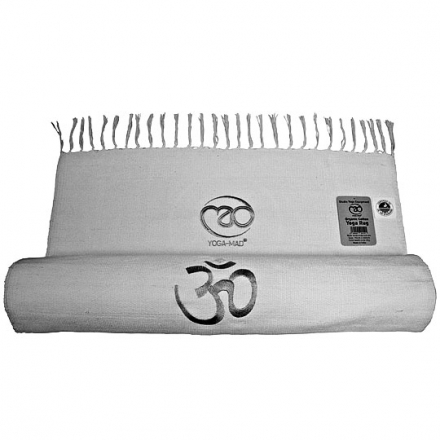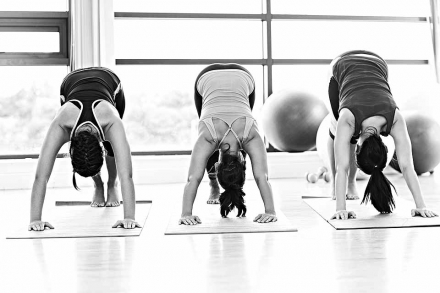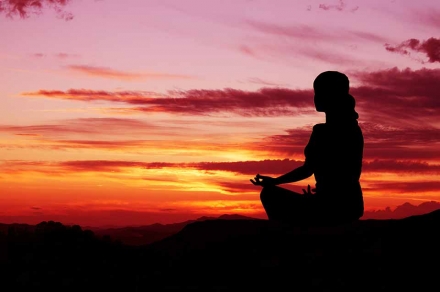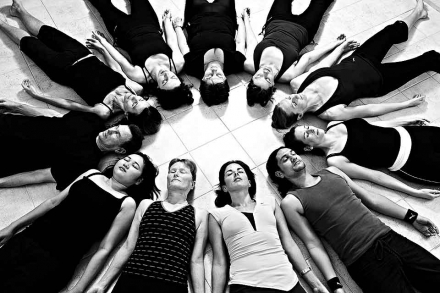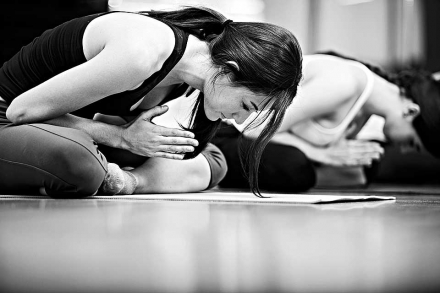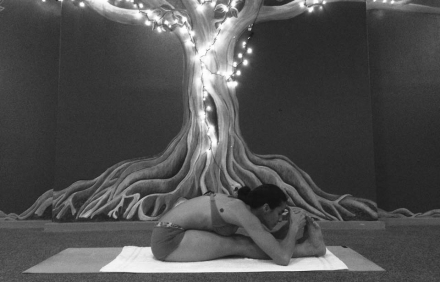Welcome, dear friend, to the amazing world of yoga! Now, I know you must be thinking, “Yoga? Isn’t it just a bunch of stretching?” Well, let me tell you, it’s so much more than that! It’s a vast universe made up of many yoga styles, each with its unique charm and benefits. Whether you’re a beginner or a seasoned yogi, there’s always a new style to explore and master. So, buckle up as we embark on this exciting journey to understand the various types of yoga and how they can transform your life.
Did you know there are as many yoga disciplines as there are flavors of ice cream? Okay, maybe not that many, but close enough! Each yoga discipline has its own set of poses, philosophies, and techniques. Some are slow and soothing like a gentle summer breeze, while others are intense and fiery like a CrossFit workout. No matter what your taste is, there’s a discipline that’s perfect for you. So, let’s dive in and find your flavor in the rich and diverse world of yoga.
Introduction to Yoga
Welcome to an Introduction to Yoga, a journey that encompasses the body, mind, and soul. We’ll explore an Overview of Yoga, shedding light on its essence. We’ll delve into the Benefits of Yoga, highlighting how it fosters wellbeing. However, like any practice, it’s important to understand the Potential Risks of Yoga. Then, we’ll venture into the enlightening world of Yoga Philosophy. Lastly, we’re launching you into practice with some accessible Yoga Poses for Beginners. Let’s embark on this enriching path together!
Overview of Yoga
Stepping off the bustling streets of our fast-paced reality, imagine entering a serene and calming space where your mind, body, and spirit are invited to harmonize with the rhythm of the universe. Welcome to the world of Yoga, a practice that originated in ancient India, offering a haven of tranquility and rejuvenation in our chaotic lives.
Yoga is an ancient discipline that unites the mind, body, and spirit. It is a holistic approach to health and well-being, emphasizing not just physical fitness, but also mental and spiritual growth. The word “Yoga” comes from the Sanskrit word “Yuj”, which means to join or unite, symbolizing the union of body and consciousness. It incorporates breathing exercises, meditation, and specific body postures known as asanas, designed to promote relaxation and self-discipline.
Yoga is not just about twisting and bending, it’s about creating a balance in the body through developing strength, flexibility, and mental clarity.
Benefits of Yoga
Moving forward from the basic understanding of yoga, let’s delve into the benefits of yoga that have contributed to its worldwide popularity. Yoga has an impressive list of benefits that make it worth trying out. Firstly, it’s a fantastic way to improve your flexibility. With consistent practice, those seemingly impossible poses become second nature. It’s also a great way of strengthening your muscles and improving your posture.
Another significant benefit is the stress relief that yoga provides. The breathing techniques used in yoga can help calm your mind and reduce anxiety. Plus, it can boost your mood, making you feel happier and more positive. Lastly, it can improve your sleep quality, which is crucial for overall health.
However, it’s not all about the physical and mental benefits. Yoga also encourages a sense of inner peace and mindfulness, nudging you towards a healthier lifestyle. So, why not give yoga a try and unlock these benefits for yourself?
Potential Risks of Yoga
Having painted a vivid picture of the benefits and the philosophy of yoga, let’s now gently turn our focus towards the potential risks associated with yoga. Like any other form of exercise, yoga is not without its potential pitfalls.
The first point to note is that inappropriate or overly vigorous practice can sometimes lead to injuries. A common example of this is straining or spraining the muscles and ligaments by pushing yourself too hard or adopting incorrect postures. Therefore, it’s essential to practice yoga under the guidance of a qualified instructor.
Secondly, yoga should not be used as a substitute for medical treatment. It’s a holistic practice that complements conventional medicine but doesn’t replace it.
Finally, let’s remember that each body is unique. What works for one may not work for another. So, listen to your body and honor its limits. Remember, yoga is not about performance, but a journey of self-discovery and wellness.
Styles of Yoga
Let’s explore the diverse Styles of Yoga together! First, we’ll delve into the calming and balanced techniques of Hatha Yoga. Next, we’ll awaken our spiritual energy with Kundalini Yoga. Moving on, we’ll experience the rigorous sequences of Ashtanga Yoga. Afterward, we’ll revisit Kundalini Yoga to further unlock our potential. Lastly, we’ll focus on precision and alignment in Iyengar Yoga. Ready to embark on this fascinating journey? Let’s go!
Hatha Yoga
Now let’s joyously dive into the vibrant sea of various yoga styles. Let’s first explore the calming shores of Hatha Yoga.
Hatha Yoga, one of the most popular styles in the West, is the perfect place to start your yoga journey. It’s a style that focuses on physical postures, or asanas, and breath control, known as pranayama. This practice encourages you to slow down, be present, and nourish your body with every breath.
Imagine yourself in a serene setting, your body gently bending and stretching in harmonious motion. Hatha Yoga delicately intertwines your breath with movement, creating a dance of mindful awareness. It’s an excellent way to introduce your body to yoga as it offers a gentle approach.
So, whether you’re a busy bee needing to release stress, or a yoga newbie looking for a friendly introduction, Hatha Yoga is a welcoming embrace waiting for you.
Kundalini Yoga
Kundalini Yoga is often referred to as the ‘yoga of awareness’. It focuses on awakening the energy at the base of the spine and drawing it upward. This form of yoga combines physical poses with breath control, mantra chanting, and meditation for a holistic practice. Its practitioners often report a heightened sense of self-awareness and a deeper spiritual connection.
The goal of Kundalini Yoga is not just a healthy body, but a balanced mind and spirit as well. It’s about unlocking your potential and awakening the powerful energy within you. So, why not give Kundalini Yoga a go? It might just be the transformative experience you’ve been looking for.
Ashtanga Yoga
A popular style that has captured the hearts of many is Ashtanga Yoga.
Ashtanga Yoga, which translates to “eight-limbed yoga,” is a dynamic, physically demanding practice that synchronizes breath and movement to produce an internal heat. This style is known for its series of specific postures, each linked with a breath in this flowing sequence.
The great thing about Ashtanga Yoga is its element of progression; it provides a clear path of development that can bring a sense of accomplishment to your practice. It’s not just about the physical challenge, but also the mental resilience it builds. Ashtanga Yoga can be a great choice if you’re looking for a comprehensive practice that balances strength, flexibility, and mindfulness. So, why not give it a try? You might find it’s the perfect style to help you deepen your connection with yoga.
Yin Yoga
Yin Yoga is a delightful and relaxing style that encourages slow, mindful movements and deep, meditative breathing. It focuses on holding postures for extended periods, typically between 3 to 5 minutes. This gentle approach allows us to reach the deeper tissues of our bodies like our fascia, connective tissues, and even our joints.
Yin Yoga is perfect for those looking to improve flexibility, relieve stress, and cultivate a sense of inner peace. It provides a wonderful counterbalance to more active forms of exercise, making it an excellent choice for those seeking a tranquil and restorative practice. If you’re looking to unwind, relax, and stretch deeply, Yin Yoga might be the ideal type for you. Isn’t it fascinating, how a single practice of Yoga can offer such diverse experiences?
Restorative Yoga
Restorative Yoga is like a big, gentle hug for your over-stressed body and mind. It’s the perfect antidote to a busy lifestyle and focuses on relaxation, renewal, effortlessness, and ease. This yoga style uses props such as bolsters, blankets, and yoga blocks to fully support your body in each pose, allowing your body to open slowly and naturally with no effort. Poses are held for a longer period, typically five to twenty minutes. This gives your body ample time to relax and sink into the pose.
This type of yoga can be a wonderful way to introduce calmness into your life, reduce stress, and promote a peaceful state of mind. So why not give Restorative Yoga a try? It might be just the healing balm your body and mind need.
Power Yoga
Power Yoga is all about energy, intensity, and dynamism. This style is heavily influenced by Ashtanga yoga but it doesn’t stick to a particular sequence, making each class a unique experience. It’s perfect for those who love a good workout and want to break a sweat. The poses in Power Yoga are designed to build inner heat, increase stamina, strength, and flexibility.
Power Yoga infuses the traditional benefits of yoga with a fantastic cardio session. It’s a great way to tone your body and cleanse your mind simultaneously. This yoga style is quite popular among athletes and fitness enthusiasts. So, if you’re looking for a yoga style that pushes you to your limits while keeping the essence of yoga intact, Power Yoga might be your perfect match!
Disciplines of Yoga
In exploring the Disciplines of Yoga, we start with Meditation, a practice of focused attention that brings tranquility. Next is Breathing Exercises that vitalize our body and mind. Then we delve into Pranayama, the art of breath control, enhancing our energy flow. Moving forward, we’ll consider Vinyasa Yoga, a dynamic flow linking breath with movement. Finally, we’ll heat things up with Bikram Yoga, performed in a hot room for a detoxifying sweat. Each discipline offers unique benefits, helping us achieve balance and wellness.
Meditation
Moving beyond the physical poses, we delve deeper into the spiritual aspects of yoga that offer more than just flexibility and strength. Meditation is one such discipline that is integral to the practice of yoga. Meditation enhances the mind’s ability to concentrate, calm down, and focus, thereby managing the stresses of everyday life with a smile. It’s a delightful way to start your day, promoting a sense of serenity and peace that can carry you through the hustle and bustle of your daily grind.
Meditation in yoga often involves focusing on your breath, a mantra, or simply observing the thoughts that arise and pass in your mind. This practice has been shown to reduce anxiety and depression, improve attention span, and increase feelings of well-being. So, why not give it a try? Remember, like any other skill, meditation also takes practice. So, be patient with yourself and enjoy the journey.
Breathing Exercises
Let’s delve into the specific disciplines that form the essence of this ancient practice. One such discipline is Breathing Exercises.
Breathing exercises, often referred to as Pranayama, are an integral part of yoga. They are the fuel that ignites the fire of yoga within you. These exercises work on calming your mind and bringing a sense of balance to your physical and mental state. The beauty of these exercises is that they can be practiced anywhere, anytime, making it a flexible discipline to integrate into your daily routine.
From deep conscious breathing, also known as Anuloma Viloma, to the cooling breath technique, known as Sheetali Pranayama, each exercise has its unique benefits. They help in improving focus, reducing anxiety, and enhancing overall well-being. Embrace these Breathing Exercises for a healthier, happier you!
Pranayama
Moving from the variety of yoga forms, let’s delve a bit deeper into the heart of yoga – its rich and diverse disciplines. One such discipline is Pranayama.
Pranayama is a Sanskrit term, where Prana means life force and ayama means control. Simply put, it’s the practice of breath control. This breathing technique is seen as a means to attain higher states of awareness. Now, you may wonder, “How can controlling my breath lead to increased awareness?” Well, it’s all about being in sync with your own body.
By controlling your breathing, you’re teaching your body to be calm, composed, and in the present moment. Whether you’re an avid yogi, or new to the practice, incorporating Pranayama into your routine can have a profound impact. Not only can it boost your mental well-being, but it can also improve your physical health. So, why not give Pranayama a try?
Choosing the Right Yoga for You
Firstly, Consider Your Goals before embarking on your Yoga journey. Whether it’s stress relief or flexibility, define what you want to achieve. Then, Explore Different Types of Yoga. Each style offers unique benefits, so find one that aligns with your goals. Choosing the Right Teacher is equally important. Your instructor should inspire and motivate you. For those seeking healing, consider Therapeutic Yoga. It’s designed to restore physical and mental health. Lastly, if you’re experienced and seeking a challenge, explore Yoga for Advanced Practitioners. It pushes your boundaries while deepening your practice.
Consider Your Goals
Now that we’ve journeyed through the various disciplines of yoga, let’s set our sights on finding the perfect yoga style for you. Just as a sculptor carefully selects the ideal chisel for their masterpiece, your personal goals can guide you in choosing the right yoga form.
Consider Your Goals: Goals are like stars, guiding us through the vastness of choices. Are you seeking to reduce stress or improve your mental well-being? Perhaps Hatha or Restorative Yoga would be a good fit. If you wish to build strength and enhance physical fitness, then Ashtanga or Power Yoga might be more suitable. For those looking to explore a spiritual path and immerse themselves in the ancient practices, Kundalini Yoga may be your answer. Remember, yoga is not one-size-fits-all. It’s a deeply personal journey, so take your time to reflect on your goals. They will greatly influence your yoga experience and help you choose the style that best aligns with your needs.
Explore Different Types
You might be wondering, how do I choose the right yoga style for me? Let’s explore different types of yoga.
There’s a whole world of yoga styles out there, each offering its own unique benefits. From the fast-paced sequences of Ashtanga Yoga to the gentle and meditative practices of Restorative Yoga, there’s something for everybody. If you’re looking for something that marries physical postures with breathing exercises, Hatha Yoga could be a great fit. For those wanting to build strength and flexibility, Vinyasa Yoga is worth exploring.
Remember, the best type of yoga is the one that resonates with you. It can be helpful to try out a few different styles before settling on your preferred one. This way, you can find what meets your needs and matches your fitness level. So, don’t be afraid to step into a new class and try something different!
Find the Right Teacher
It’s time to discuss how to select the perfect yoga teacher for your journey. Finding the right teacher can really enhance your yoga experience. 😊 It’s much like finding a personal trainer – you want someone who understands your goals, communicates effectively, and creatively challenges you.
Consider seeking a teacher who aligns with your needs and preferences. Pay attention to their teaching style and philosophy. Some might focus more on the spiritual aspects of yoga, while others could be more into the physical postures. Ask questions about their training, experience, and approach to teaching.
Always remember, it’s okay to try out different teachers until you find the one that resonates with you. The right teacher will make you feel comfortable, inspire you, and help you explore the depths of yoga. Lastly, keep in mind that the best teacher for you today might not be the best one for you tomorrow, as your yoga journey evolves.
Benefits of a Regular Practice
Regular practice reaps bountiful benefits, including Physical Benefits like improved strength and stamina. It also offers Mental Benefits, enhancing focus, reducing stress, and promoting positivity. The Spiritual Benefits are profound, nurturing our connection with our inner selves and the universe. Regular practice also cultivates Enhanced self-awareness, allowing us to understand ourselves better. Finally, it aids in Mindfulness cultivation, helping us stay present and appreciate the beauty of every moment. Embrace regular practice, and watch as your life transforms in incredible ways.
Physical Benefits
We’ll start with some of the physical perks that come with regular yoga practice.
Yoga is like a gift that keeps on giving when it comes to physical health. First and foremost, it promotes strength and flexibility. The various poses and postures are designed to engage every muscle in your body, leading to improved tone and definition over time. In the process, your flexibility will increase, allowing for a greater range of motion and reducing the risk of injury in daily life.
In addition, yoga significantly improves your balance and coordination. This not only enhances physical performance but also helps prevent accidental falls. Moreover, yoga’s focus on deep, mindful breathing can bolster your cardiovascular health and boost your immunity. Remember, a healthy body is a happy body! So, why not invest in a regular yoga practice?
Mental Benefits
Let’s dive into the delicious benefits that a regular practice can bring into your life. We’ll be peeling back the layers of benefits, starting with the mental benefits.
Imagine feeling like you’re walking on air, with a noticeable lightness in your head. Practicing yoga regularly can bring about this blissful state of mental clarity. Yoga is an incredible tool for combatting stress – it’s like a natural antidepressant! It helps you to manage anxiety, improves your mood, and boosts your overall mental wellbeing. Remember, a happy mind means a happy life!
By focusing on your breath and movements during your practice, you’re essentially giving your mind a break from the hustle and bustle of everyday life. This encourages mindfulness, allowing you to live more fully in the present moment. Trust us, your mind will thank you for the much-needed vacation! So, why not make yoga a part of your daily routine and experience the mental liberation it provides?
Spiritual Benefits
Having navigated through the diverse paths of yoga to find the one that suits you, let’s delve into the profound rewards that come with regular practice. Today, our focus will be on Spiritual Benefits.
Yoga isn’t all about physical flexibility or mental serenity; it’s also a journey into the depths of your own spirit. With consistent practice, yoga has the potential to bring you closer to your spiritual self. It fosters a deep sense of inner peace and spiritual clarity that can be transformative. You may find yourself experiencing moments of profound insight and a heightened sense of connection with the world around you.
Moreover, yoga can serve as a tool for self-discovery, encouraging you to explore your inner landscape in a compassionate and non-judgmental manner. Whether or not you consider yourself religious, the spiritual benefits of yoga can enhance your life, helping you to live with greater purpose and authenticity.
So, why not give it a shot and uncover the realms of tranquility within you?
Safety Tips
Remember, safety always comes first! Be mindful of your limits and don’t push yourself too hard. It’s essential to listen to your body as it knows best when you need rest. Regularly consult with your doctor to ensure you’re in good shape. Personal limitations are not setbacks but safety checkpoints. Lastly, the instruction quality you’re following matters, as proper guidance ensures safety.
Be Mindful of Your Limits
As we bask in the glow of the myriad benefits that a regular practice can bring, it’s equally important to tread carefully on the path of self-improvement. Let’s now turn our attention to safety precautions, beginning with the mantra – Be Mindful of Your Limits.
Just like a tree doesn’t grow overnight, your progress too will take time. The key is to be patient and not force your body into something it’s not ready for. Slow and steady is the way to go! Remember, it’s not a race or a competition. You’re doing this for yourself, so keeping your capabilities in mind should be your priority.
Let’s say you’re in a class or a session and you’re asked to perform a task that you’re not comfortable with or you feel is beyond your current ability. It’s totally fine to modify the task or take a break. You and your well-being are paramount. Stay true to your body and its limits, as disregarding them can lead to injuries.
Listen to Your Body
As we embrace all the benefits of a regular practice, it’s just as important to remember our safety. So, let’s dive right into it!
One of the critical safety tips is to Listen to Your Body. Isn’t it wonderful how our bodies speak to us? If you feel any pain or discomfort during your exercise or practice, that’s your body telling you something isn’t right. Don’t ignore it. Pay close attention to these signs; they are your body’s way of keeping you safe.
Remember, no one knows your body better than you do. If you feel overly tired or notice an unusual aching, maybe it’s time to slow down or even take a break. It’s always better to be safe than sorry. Listen to your body; it knows what it’s talking about.
So, as we continue to enjoy our regular practices, let’s always remember to listen – our bodies are always communicating with us.
Consult with Your Doctor
While the benefits of regular practice are numerous, it’s equally important to prioritize safety in your routine. One crucial aspect is to consult with your doctor before embarking on any new health regime. The importance of this step cannot be overemphasized, especially for those with underlying health conditions.
Before you start any new exercise or diet plan, it’s always a good idea to have a one-on-one with your primary healthcare provider. They know your medical history and can provide personalized advice based on your unique needs and limitations. They might suggest certain precautions, modifications, or even advise you to avoid certain actions altogether.
It’s not just about avoiding injury, but also about ensuring that the changes you make are beneficial for your overall health. So, always remember to consult with your doctor before making any significant changes to your routine. Your safety and wellbeing should always be your top priority.
Conclusion
In conclusion, we’ve explored the benefits of yoga, helping you understand yoga more deeply. We’ve also provided tips on choosing the right practice that suits your needs. Yoga is a practice suitable for all ages, and we’ve delved into its inclusivity. Lastly, we shared personal reflections on practicing yoga, hoping to inspire you on your journey. Yoga is not just a practice, but a lifestyle.
Summary of Benefits
Isn’t it heartwarming to realize how much yoga can add to our lives? As we’ve explored in our journey, the manifold benefits of yoga can truly help improve our overall wellness. This beautiful practice not only strengthens and tones our bodies but also calms our minds, helping us find balance in our busy, bustling lives. Studies have shown that yoga helps to decrease stress, anxiety, and depression while boosting mood and overall sense of well-being.
But yoga isn’t just about fitness. It’s a holistic approach to health that integrates the body, mind, and spirit. The benefits of yoga extend beyond physical health – it enhances our mental clarity, emotional resilience, and spiritual connection.
The best part? It’s never too late to start. Irrespective of age or fitness level, anyone can experience the transformative power of yoga. So, let’s embrace yoga and experience the bliss of holistic well-being.
Understanding Yoga
Let’s now delve into the heart of yoga itself. Understanding Yoga is much like comprehending a vast ocean – it’s deep, profound, and beautifully complex. At its core, yoga is not just a set of physical exercises but a holistic methodology for comprehensive wellbeing.
It’s an art that embraces the unity of mind, body, and spirit, enabling us to achieve a state of inner peace and balance. Yoga is rooted in ancient wisdom and has evolved over centuries, incorporating elements of meditation, breath control, and specific body postures.
The beauty of yoga lies in its flexibility and adaptability. Whether you’re a beginner or an advanced practitioner, yoga opens up a path for self-discovery and growth. So, remember, understanding yoga is not a destination, but a journey of continuous learning and exploration. It’s about connecting with yourself on a deeper level and experiencing the world around you with a renewed sense of awareness and tranquility.
Finding the Right Practice
After embracing the safety precautions, it’s time to embark on an even more exciting journey of Finding the Right Practice. Just like each of us is unique, so too is our ideal yoga practice. No one size fits all when it comes to yoga, and the beauty of it lies in its diversity.
There are various types of yoga, from Hatha and Vinyasa to Ashtanga and Kundalini, each with its own rhythm and set of postures, so don’t worry if you don’t immediately find your perfect fit. It might take a few trials, but the joy of discovery is part of the process. You might start with something gentle like Yin Yoga, then discover you love the challenge of a Power Yoga class.
Remember, yoga is a journey, not a destination. Be open to new experiences and keep in mind that the right practice for you is the one that brings you peace, joy, and fulfillment. Happy exploring!
Closing Meditation
In conclusion, exploring various yoga styles, types of yoga, and yoga disciplines will undoubtedly open up a world of possibilities for personal growth and wellness. The journey to finding the right yoga practice is unique and personal, full of discovery and self-awareness.
Remember, yoga is not just about flexibility or strength but about finding balance, peace, and harmony within oneself. So, whether you’re a seasoned yogi or a beginner, yoga offers something for everyone. Embrace the journey and enjoy every moment of your yoga practice.
0






